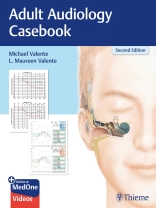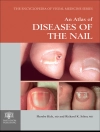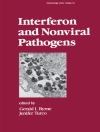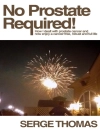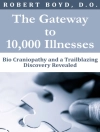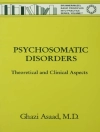Real-life cases enable students and practitioners to integrate adult-centered audiology knowledge into clinical practice!
Adult Audiology Casebook, Second Edition by esteemed researchers and educators Michael Valente and L. Maureen Valente presents all new cases, reflecting issues that have become more prevalent in clinical settings. An impressive array of international authors provide expert advice, best practices, and vital tools clinicians need to successfully manage patient expectations and achieve optimal outcomes. Seven sections encompass a wide range of hearing, vestibular, and balance disorders, other conditions that result in hearing loss, diagnostic exams for auditory and vestibular function, and treatments.
Key Features
- 50 comprehensive cases covering all aspects of adult audiology include thought-provoking questions and answers followed by a summary of key points
- Full color audiograms provide a reader-friendly hearing loss evaluation tool
- Simple and complex treatment approaches including aural rehabilitation, sound therapy, auditory processing disorder therapy, hearing aids, cochlear implants, and hearing assistive technologies
- Discussion of a wide variety of diagnostic tools used for audiometric assessment
Essential reading for graduate level audiology students, this casebook is a must have for sharpening and enhancing clinical skills. It also provides a robust classroom tool for audiology and speech-language pathology professors, as well as a practical daily reference for audiologists, otolaryngologists, and ENT residents.
This book includes complimentary access to a digital copy on https://medone.thieme.com.
Inhoudsopgave
Part I Hearing Disorders
1 Meniere’s Disease and Aided Distortion
2 An Unexpected Cause of Sudden Hearing Loss
3 Audiologic Management of an African American Patient with Sickle Cell Disease
4 Diagnostic and Treatment Outcomes for an Adolescent with Left Functional Hemispherectomy
5 Tympanic Membrane Perforation as a Result of a Japanese Beetle
6 Middle Ear Effects from Playing a Brass Musical Instrument (with video)
7 Maximum Conductive Hearing Loss Secondary to Surgical Closure of the External Auditory Canal
8 When Mild Hearing Loss Accompanies Mild Cognitive Impairment
9 Audiologic Management of a Patient with Psychogenic Hearing Loss
10 How Auditory Processing Deficits Can Interfere with a College Student’s Success in School and Work
11 Hearing versus Auditory Processing Disorders: Are Hearing Aids Enough?
12 An Unusual Case of Fluctuating Hearing Loss
13 Hidden Hearing Loss
14 Auditory Dyssynchrony: A Struggle to Understand Speech in Noise
15 Auditory Processing Disorder Therapy for Mitochondrial Myopathy
16 Asymmetric Hearing Loss: Evaluation, Diagnosis, and Treatment
17 The Origins of Physiologic Modulation of a Low-Noise Microphone in a Human Ear Canal
18 Occupational Noise-Induced Hearing Loss in a Zumba Instructor: Identification and Management
Part II Diagnostic Examination—Auditory Function
19 Nonorganic Hearing Loss: A Case Study
Part III Diagnostic Examination—Vestibular Function
20 Central Vestibular Dysfunction: A Case of Wernicke’s Encephalopathy (with video)
21 Hearing Disorders: Vestibular Schwannomas and Sudden Sensorineural Hearing Loss
22 A Classic Case of Vestibular Neuritis
23 Vestibular Migraine Disease and Horizontal Canal Benign Paroxysmal Positional Vertigo in an Adult Patient
24 A Case of Central and Peripheral Vestibular Impairment
25 Importance of Audiologic and Vestibular Evaluation in the Diagnosis of Unilateral Vestibular Schwannoma
26 The Presentation of Cerebellar Disease in Vestibular Testing of an Adult Patient
27 The Role of an Inciting Event Causing Vertigo
28 Benign Paroxysmal Positional Vertigo Lateral Canal Conundrum
29 Adult Patient with Chronic Otitis Media and Recurrent Benign Paroxysmal Positional Vertigo
30 A Case of ‘Definite’ Meniere’s Disease: Unilaterally Abnormal Caloric Test with Bilaterally Normal Video Head Impulse Testing Test
31 Superior Semicircular Canal Dehiscence Syndrome
32 Endolymphatic Sac Tumor: Audiometric and Vestibular Considerations
Part IV Amplification
33 Transcranial Contralateral Routing of Signal for Single-Sided Deafness
34 I Hear Worse When I Wear Two Hearing Aids
35 You Need to Take Care of Your Front End!
36 I Only Want Hearing Aids&emdash;Today!
37 Innovative Hearing Device for the Treatment of Mild to Severe Sensorineural Hearing Loss
38 It Is Never Too Late
39 Hearing Aid Prescriptive Methods in an Adult Patient
40 Quick Fit versus Programming Hearing Aid Fittings: Acoustic and Perceptual Differences
41 Fitting Hearing Aids to a Patient with Mild Hearing Loss
42 Patient Decision to Purchase Hearing Aids: Bundling or Unbundling
Part V Cochlear Implants
43 Cochlear Implantation in Meningitis Caused by Streptococcus suis
44 Cochlear Implantation in Chronic Suppurative Otitis Media with Cholesteatoma
Part VI Hearing Assistive Technology
45 Hearing Assistive Technology: A Viable Alternative to Hearing Aids
46 Coping with Hearing Challenges at Work
Part VII Tinnitus and Misophonia Management
47 Young Adult with Misophonia
48 Tinnitus and Hyperacusis
49 A Case of Extreme Misophonia and Hyperacusis
50 Maximizing Tinnitus/Hyperacusis Sound Therapy with Real Ear Measures
